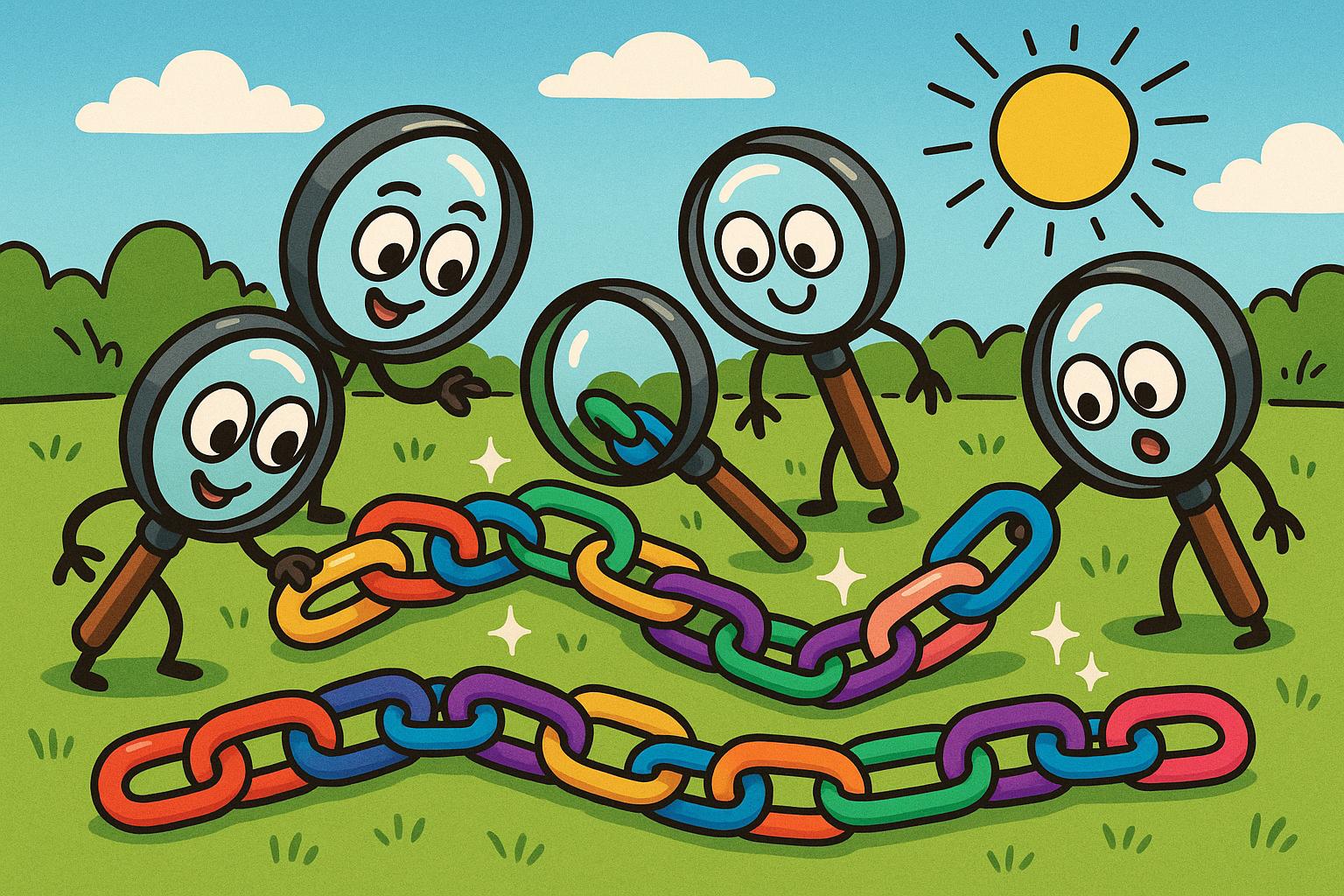Email marketing can be a game-changer for small and medium-sized enterprises (SMEs), offering a cost-effective way to engage and convert customers. Here's a straightforward guide to creating successful campaigns:
- Understand Your Audience: Know their preferences, struggles, and behaviors.
- Set Clear Goals: Define what success looks like with measurable targets.
- Craft Targeted Content: Write compelling emails that speak directly to your audience's interests.
- Design Matters: Ensure your emails are visually appealing and mobile-friendly.
- Personalize: Use segmentation to tailor your messages for different audience groups.
- Automate: Use email automation for timely and relevant engagement.
- Test and Optimize: Continuously improve your campaigns based on performance data.
- Timing and Frequency: Find the sweet spot in how often to send your emails.
- Engage with Promotions: Utilize discounts and giveaways to spark interest.
Tools like Mailchimp can simplify the process, providing design tools, automation, and analytics to enhance your email marketing efforts. By focusing on these strategies and continuously refining your approach based on analytics, SMEs can significantly boost their email marketing performance, driving more opens, clicks, and conversions.
The Power of Email Marketing for SMEs
Email marketing is great for SMEs for several reasons:
- Scalable: You can reach lots of subscribers without spending more money.
- Cost-effective: It's much cheaper than many other marketing methods.
- Analytics: You get detailed reports on how many people open your emails, click on links, and buy stuff.
- Personalization: You can send messages that matter to each subscriber by grouping them and using their names.
Studies show that email marketing can bring in $38 for every $1 you spend if you do it right. For SMEs watching their budget, it's one of the best ways to get and keep customers.
Crafting an Effective Email Marketing Strategy
Researching Your Audience
The first step in making a good email marketing plan is to really understand who you're talking to. Look closely at what your customers are like and what they've done before, such as:
- Who they are - Things like their age, where they live, and what job they have.
- What they like and struggle with - Why do they buy things? What problems do they need help with?
- How they've reacted before - How many people open your emails, click on stuff, and actually buy things.
This helps you make emails that speak directly to what your audience cares about, making them more likely to pay attention and buy.
Defining Campaign Goals and KPIs
Now that you know who you're talking to, decide what you want to achieve with your emails and how you'll know if you're succeeding. For example, you might want to:
- Get more people to sign up for your emails
- Have more people open your emails
- Sell more products
Choose clear goals so you can track how well your emails are doing by looking at things like how many people open them, click on links, and make purchases.
Creating Targeted Content
Use what you've learned about your audience to make emails they'll want to read. Write eye-catching subject lines and messages that talk about what matters to them.
Include helpful tips, stories from other users, and facts that they'll find interesting. Keep your words straightforward and focused on them.
Design and Template Considerations
When your content is ready, make sure your email looks good too. It should work well on phones and computers, be easy to read, and have clear buttons or links for what to do next. Use nice pictures and leave space so it's not too crowded.
Keep the look and feel the same in all your emails. Try out different designs to see which one works best.
Segmentation and Personalization
Divide your email list into groups based on things like what they like or what they've bought before. Send emails that are specially made for each group.
Use their names in your emails and suggest products they might like based on what they've bought before. Sending emails that feel personal can make people more interested and more likely to buy.
Executing Campaigns that Convert
Automation for Enhanced Engagement
Email automation is like setting up a system where emails go out on their own based on what your subscribers do. This is really handy for keeping people interested with welcome emails, sales info, reminders if they didn't finish buying something, and more.
Here's how to use automation well:
- Start with a series of welcome emails for new people joining your list. Share useful stuff to get them hooked.
- For those who add items to their cart but don't buy, send them a reminder. Maybe offer a little discount to nudge them.
- After someone buys something, follow up. Suggest other items they might like or give tips on using what they bought.
- Group your subscribers based on their interests or what they've bought, then send them specific emails that they'll find interesting.
- Watch for subscribers who aren't opening your emails much and try to get them back with special emails.
Testing and Optimization
To make sure your emails are working well, you need to try different things and see what works best. This means testing different subject lines, how your emails look, and when you send them.
- Change up your subject lines to see which ones get more people to open your emails.
- Experiment with how long your emails are and how they're set up.
- Play around with where you place pictures and see if that helps people click more.
- Always look at how your emails are doing and think about what you can do better.
Small changes can make a big difference in getting more people to open your emails and buy from you.
Timing and Frequency Considerations
It's important to think about when and how often you're emailing people. You want to keep them interested without annoying them.
- Look at when your emails get opened the most and try to send more around those times.
- Start by emailing new subscribers more often, then adjust based on how they respond.
- If you have different groups of subscribers, you might email some more often than others.
- If you notice people are unsubscribing a lot from certain emails, consider sending those less often.
Promotions and Giveaways
Offering deals or running contests can really get people excited. It's a good way to get more people to sign up and buy things.
- Use discounts or credits to encourage buying. Pick slow times to boost sales.
- Contests for big prizes can get people to do things like share your stuff or write reviews. It's a win-win.
- Giving away free stuff like eBooks or webinar access can get more people to sign up.
- Teaming up with other brands for giveaways can introduce you to new potential customers.
Mailchimp
Mailchimp is a tool that helps you send out these automated, targeted emails easily. It's got a bunch of features:
- A simple tool to design emails that look good on phones and computers.
- Automation features to send emails based on what your subscribers do.
- Tools to help you grow your list, like sign-up forms and landing pages.
- Ways to organize your subscribers into groups so you can send more targeted emails.
- Tools to test different emails and see how well they're doing.
- It works with online stores like Shopify, which can make your emails even more powerful.
Mailchimp is great for businesses of all sizes to connect with their customers in a personal and effective way.
sbb-itb-5c5ac24
Conclusion
Email marketing is a powerful way for small and medium-sized businesses (SMEs) to connect with their customers and get more sales. By using smart strategies like dividing your email list into groups, testing different email styles, automating your emails, making your emails personal, choosing the right times to send them, offering special deals, and making sure your emails look good on phones, you can really make a difference.
Key Takeaways
Here are some simple tips to make your email marketing work better:
- Divide your email list into groups based on things like what people like or what they've bought, and send them emails that really speak to them.
- Try out different emails to see what works best, including changing up your subject lines, pictures, and calls to action.
- Use automation to send welcome emails, reminders if someone leaves something in their cart, and other types of emails without having to do it manually every time.
- Make your emails personal by using the subscriber's name and suggesting items based on their past purchases.
- Send your emails at the right time by figuring out when your subscribers are most likely to read them.
- Offer special deals like discounts or free shipping to encourage people to buy.
- Make sure your emails look good on mobile devices and are easy to read with clear calls to action.
By focusing on these steps and always looking to improve based on how your emails are doing, you can see better results from your email marketing. This means more people opening your emails, clicking on links, and buying your products. It's all about trying different things to see what works best for your audience. When you get it right, email marketing can be a big help in growing your business.
Related Questions
What is the most effective email marketing campaign strategy?
The best way to do email marketing is to organize your email list into different groups based on what you know about your subscribers, like what they like or what they've bought before. Then, send emails that are just right for each group. This method has been shown to get a lot more people opening emails and buying things because the emails feel more personal and relevant.
What are the 7 email marketing strategies?
Here are seven key strategies for email marketing:
- Make it personal by using names and information specific to each subscriber.
- Write subject lines that grab attention by being clear and direct.
- Make sure your emails look good on phones and other devices.
- Use automation to send emails based on what your subscribers do.
- Test different versions of your emails to see which ones work best.
- Share useful information, not just ads.
- Keep an eye on how your emails are doing by tracking opens, clicks, and sales.
What email marketing strategies work best for small business?
Small businesses do well with email marketing by:
- Sending welcome emails to new subscribers.
- Sharing updates and news in newsletters.
- Offering special deals in promotional emails.
- Announcing new features or products.
- Reminding customers about items they left in their cart.
- Sending holiday greetings and other special messages.
How do you create an engaging email marketing campaign?
Here's how to make your email campaigns more engaging:
- Use your brand name clearly so people know who it's from.
- Make your subject line clear and focused on what's inside.
- Keep your branding consistent in every email.
- Talk directly to your audience.
- Stick to one main idea or action in each email.
- Have a clear next step for readers to take.


![Thumbnail for: Cross-Selling & Upselling: 10 Strategies [2024]](https://mars-images.imgix.net/seobot/cmoindex.com/6647fa8465774bd9ef96fd2e-d8175c825036099a4d9cfed86841ae56.png?auto=compress)
